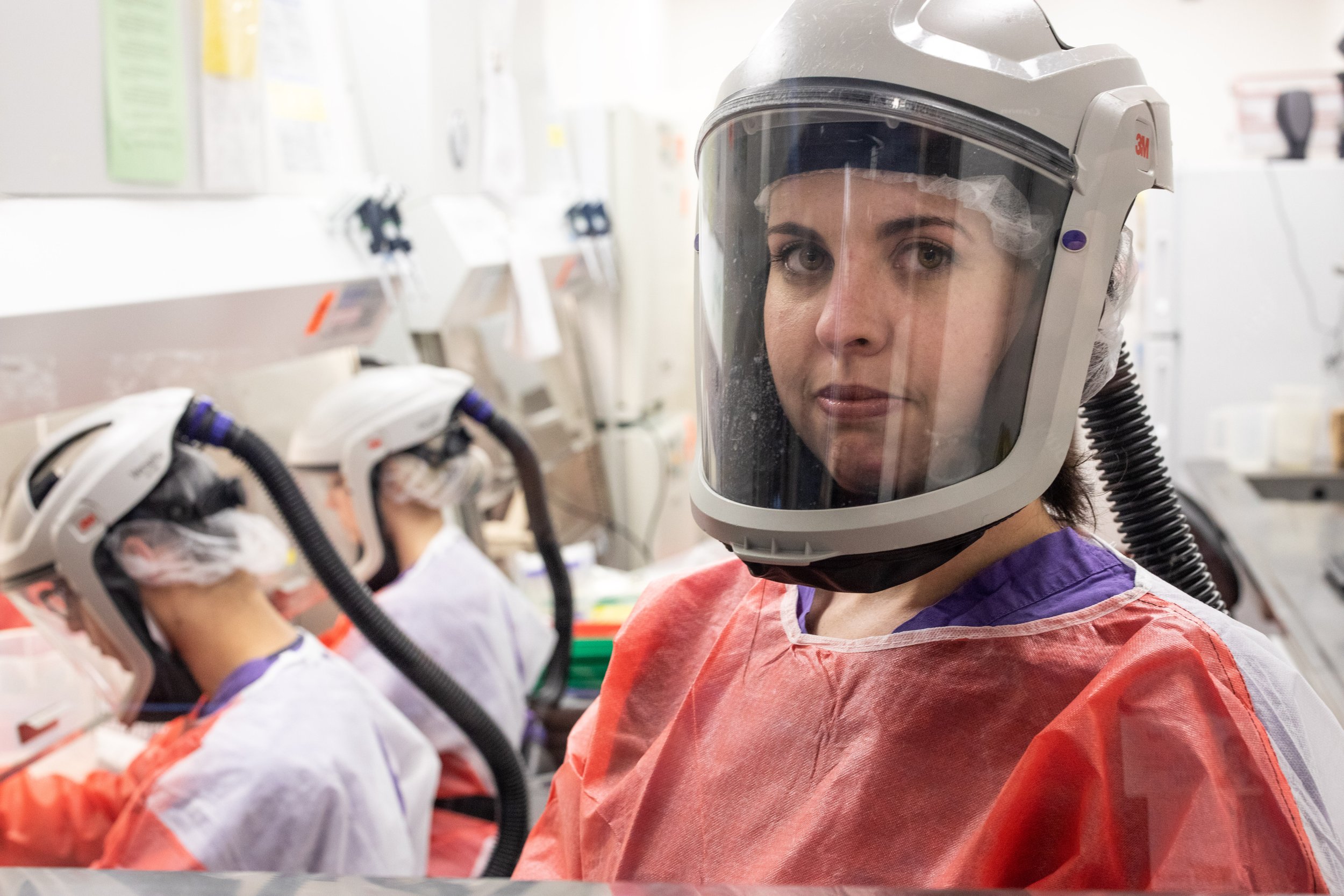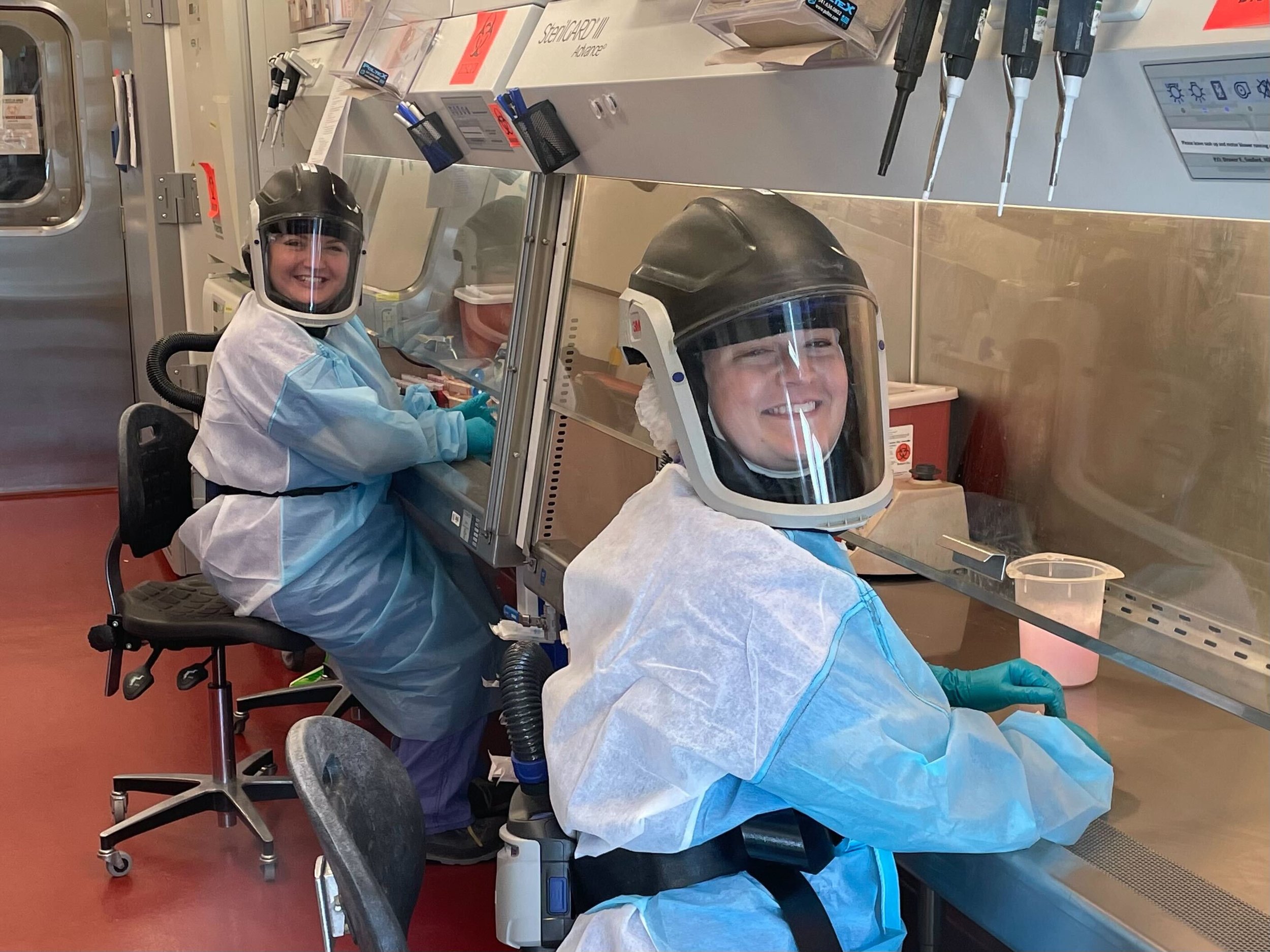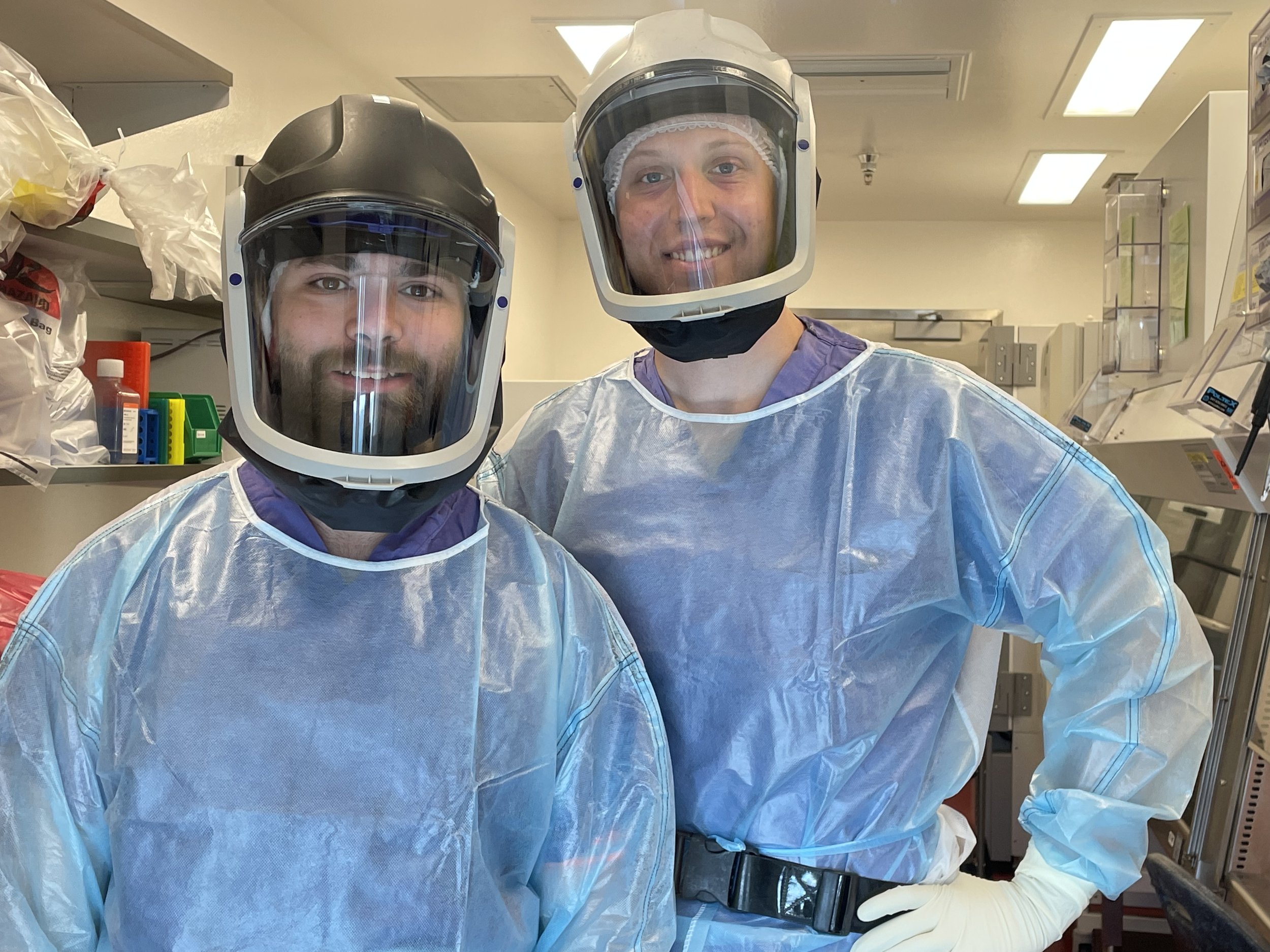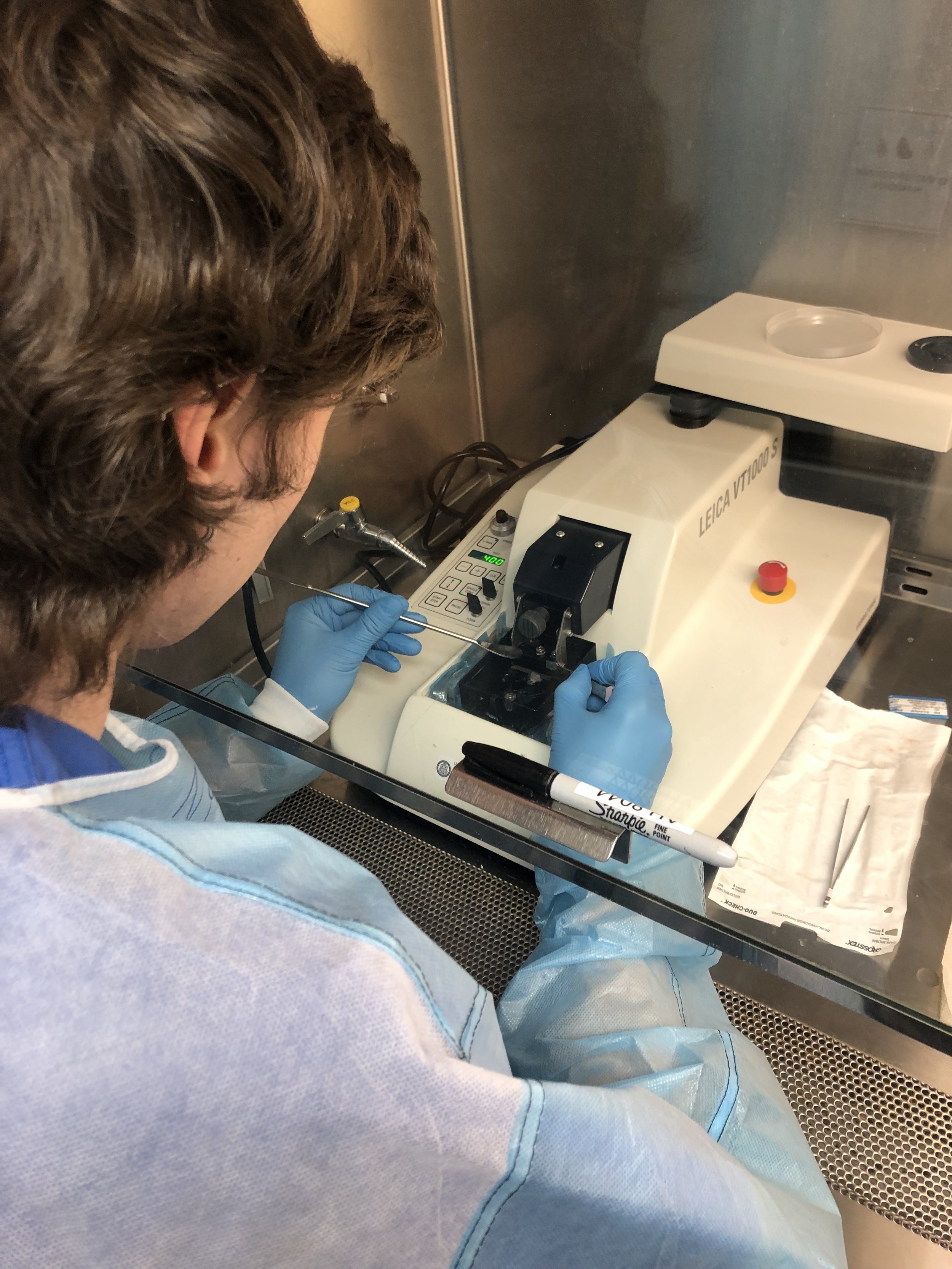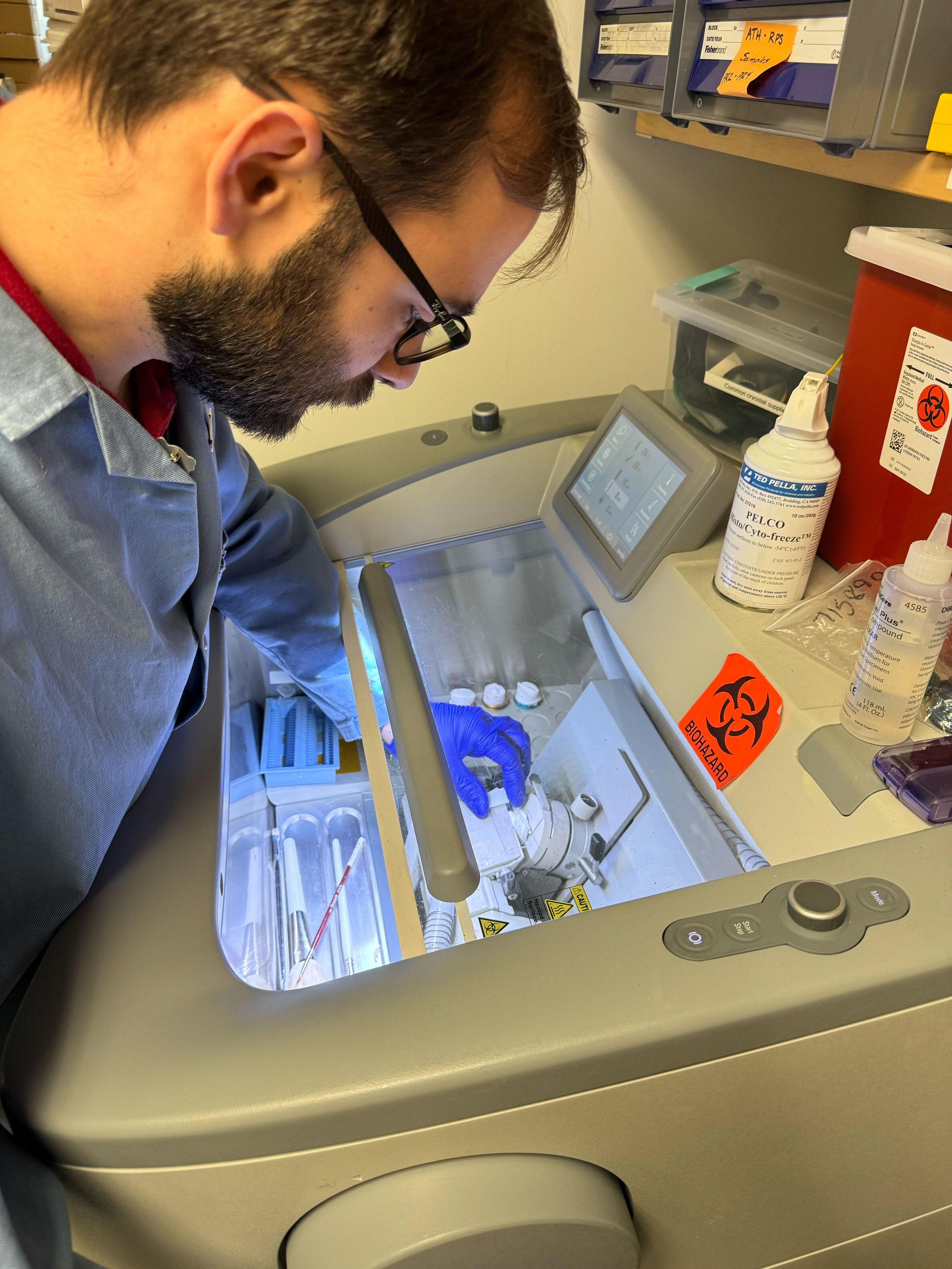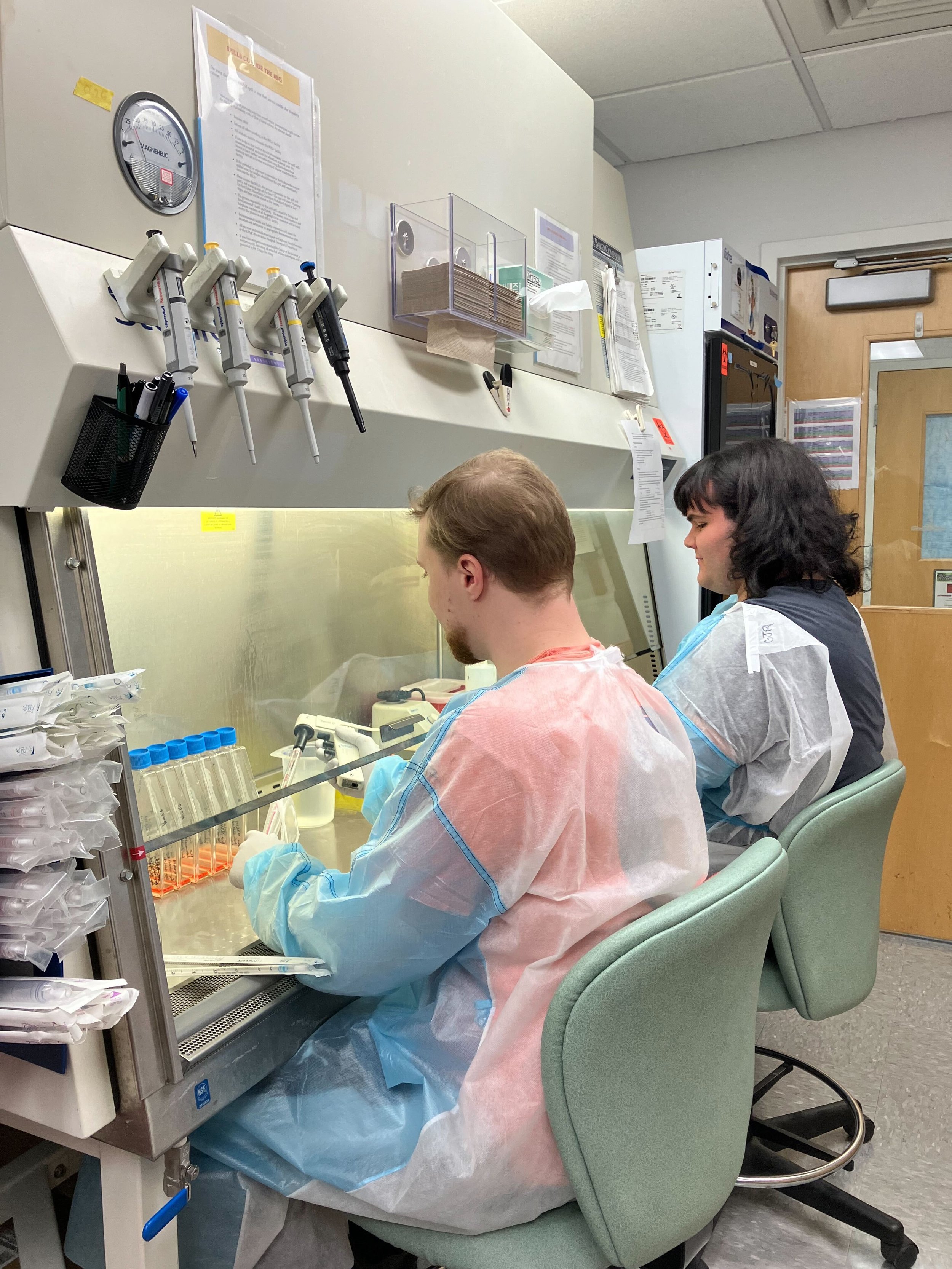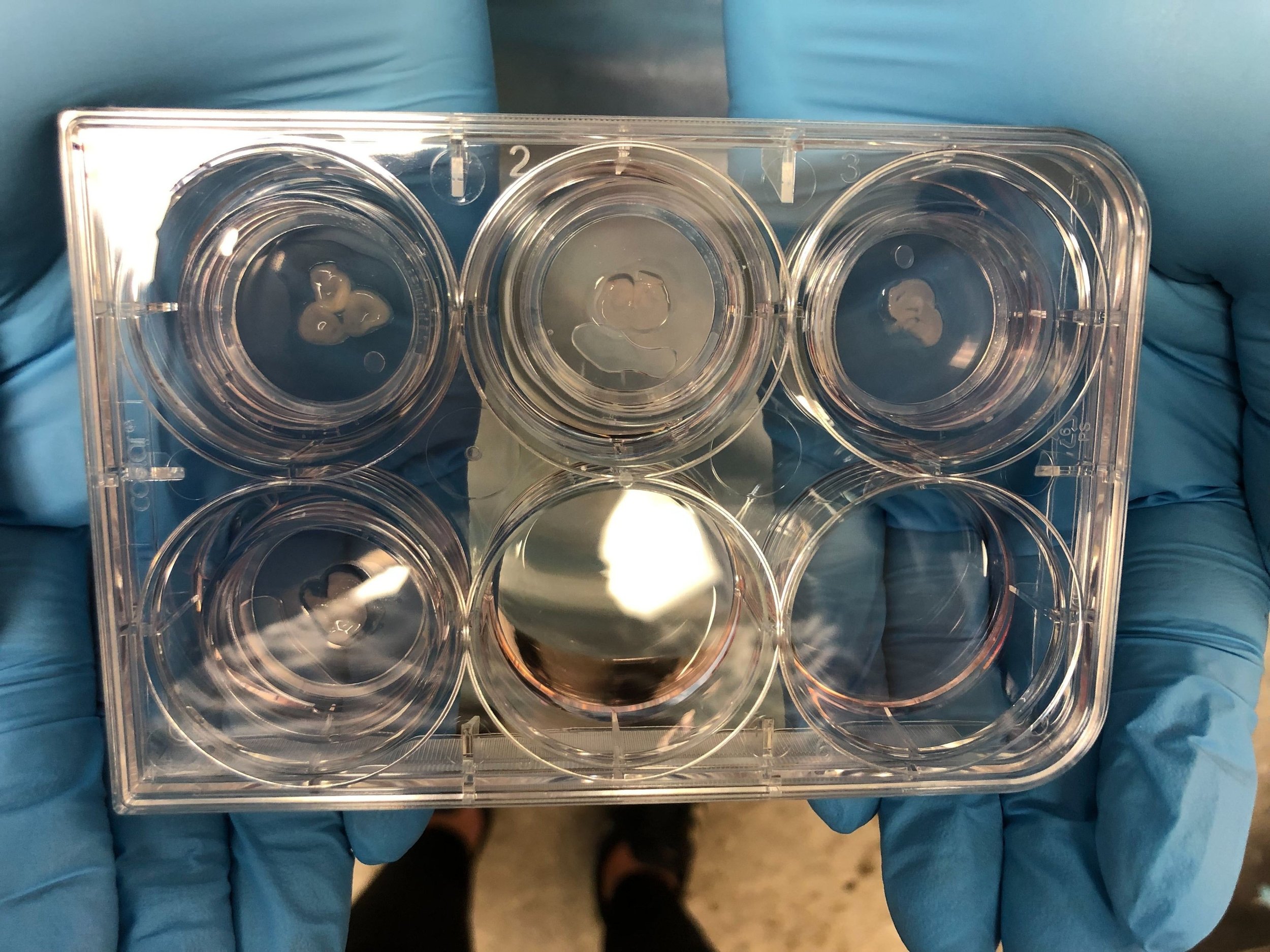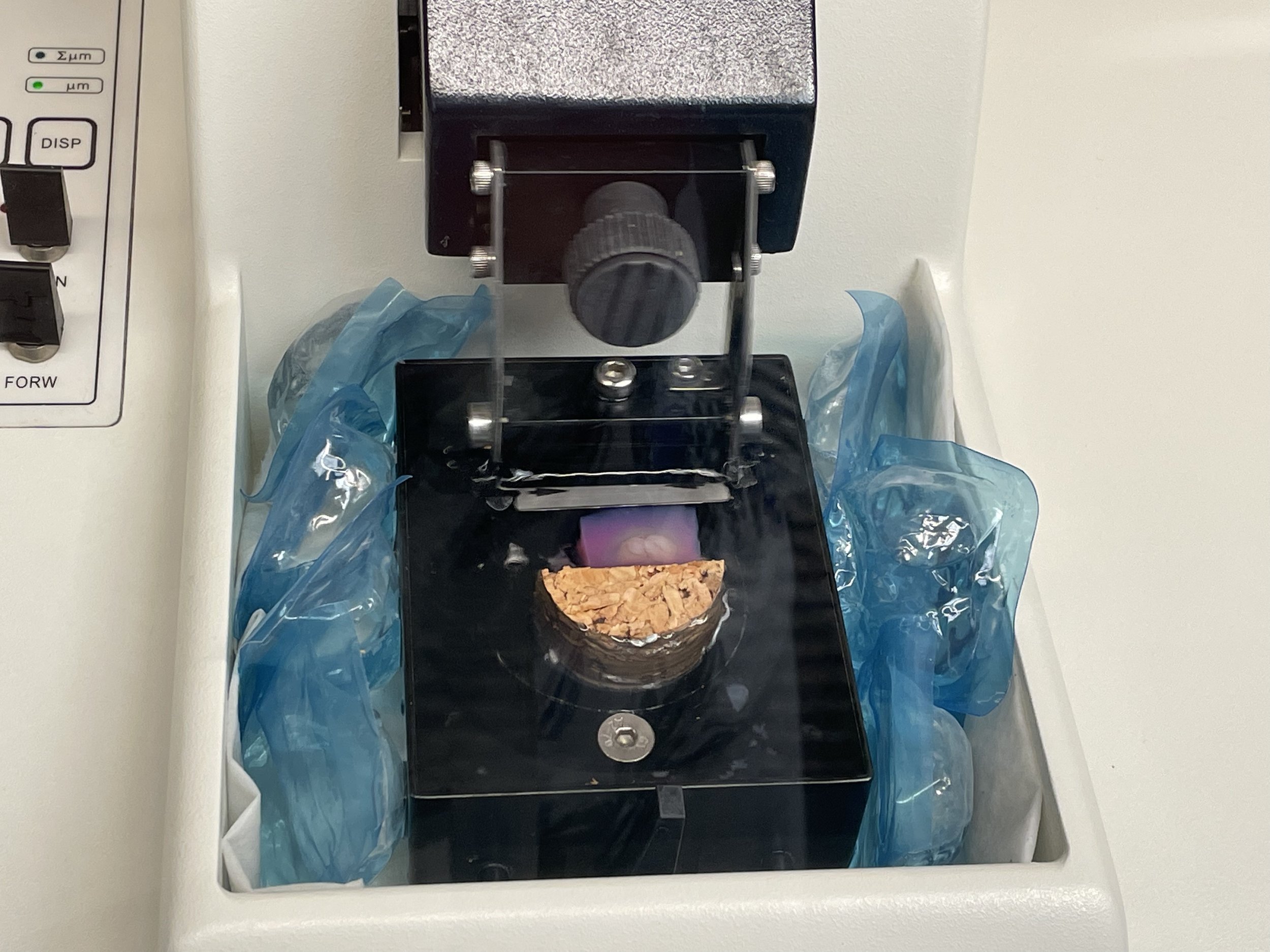Welcome to the Hartman Lab at the University of Pittsburgh Center for Vaccine Research.
Our Approach
We study emerging viruses at the human and animal interface. Our goal is to understand how viruses cause disease in order to prevent illness through effective vaccine and therapeutics.
Our approach is holistic: we use complex model systems and virulent virus strains to answer difficult experimental questions.
6 out of every 10 infectious diseases in humans are spread from animals
— World health organization
Our Mission
Conduct basic and applied research to further our understanding of the pathogenesis of emerging viruses. We seek to understand the basic mechanisms contributing to disease outcomes after infection. We also seek to translate our basic pathogenesis work to the applied evaluation of antiviral therapeutics and preventative vaccines.
Rift Valley Fever
One of our focus pathogens is Rift Valley Fever virus (RVFV).
RVF virus is a human and animal pathogen that presents a significant disease risk to people and livestock. For a fascinating history of RVF, see our review article.
RVFV is endemic throughout many regions of Africa and several Middle Eastern countries. RVFV displays continuous low-level enzootic activity, interspersed with large, explosive epizootics in ruminant animals and epidemics in humans during heavy rainfall seasons.
RVFV is transmitted by at least 40 different mosquito species, and the insect vectors that transmit RVFV are found worldwide. Emergence of RVFV in new locations (similar to Zika, Chikungunya, and West Nile) would cause considerable human morbidity and mortality as well as economic damage.
RVF is highly lethal in young ruminants, and it induces abortion rates in pregnant animals near 100%. As a result, it causes substantial economic impact on the affected regions.
In people, RVF is primarily an acute febrile illness accompanied by headache, body aches and joint pain, with occasional progression to hepatic disease, hemorrhagic fever, or encephalitis. More severe human RVF disease is associated with working or living near livestock animals.
We strive to understand HOW and WHY this virus causes severe disease.
Check out our Projects related to RVF.
WHO
Rift Valley Fever is included on the World Health Organization's 2018 list of prioritized diseases likely to cause major epidemics in the near future.
GAVI
Predicts Rift Valley fever could be the next pandemic.
Science
In January of 2016, Science magazine named Rift Valley Fever as one of the top 10 diseases for which a vaccine is urgently needed.
We work with government and industry partners to assist with pre-clinical testing of vaccines and therapeutic drugs for emerging and biodefense-related infectious diseases. Our funding sources include NIH, NIAID, NINDS, DoD, DTRA, DARPA, and JPM-MCS.
Vaccines & Therapeutics
We have the necessary federal approvals to work at BSL-3, advanced equipment, and trained staff to successfully implement large research grants and contracts aimed at understanding the pathogenesis of infectious diseases.

